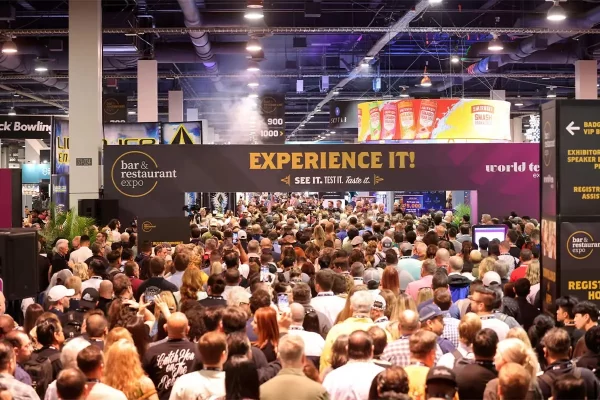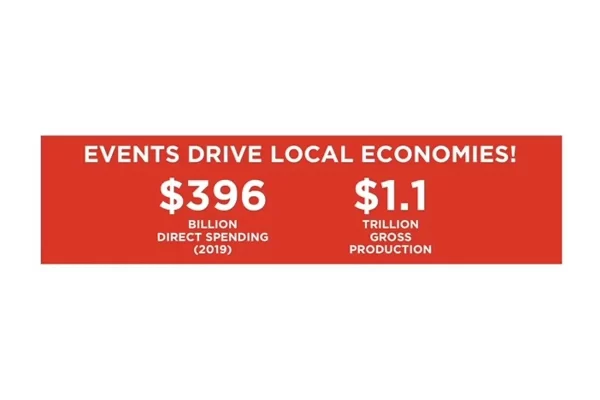This following collection of guest commentaries is the first of a two-part series spanning the exhibit industry’s transition from 2009 to 2010. Be sure to check out the second part of this series in the January 2010 issue of Exhibit City News.
Recent news reports and economic studies suggest that the recession is behind us. However, some exhibit industry leaders and executives beg to differ, believing the exhibit industry may lag behind the usual economic indicators.
Supporting this lag theory, The Center for Exhibition Research (CEIR) released a report in November stating the downward ratchet of our industry continues following a 2.6 percent decline in 2009’s third quarter compared to second quarter, making the third quarter of 2009 the sixth consecutive quarter of negative numbers. While 2.6 percent my not seem like much, the compounding decline over the last year resulted in a 13.9 percent decrease between Q3 of 2008 and Q3 2009. The report notes the 2009 metrics as net square feet is down 16.2 percent; revenue is down 22 percent; professional attendance decreased 2.5 percent and the number of exhibiting companies is down 13.4 percent.
The “CEIR Index,” for the third quarter of 2009, reported, “Exhibitions are historically a trailing indicator so even though there is reported improvement in GDP [gross domestic product] and technically we are no longer in a recessionary period, CEIR does not expect that to influence the fourth quarter 2009 numbers.”
So, what is one to believe? How can companies develop tradeshow marketing strategies in this economic downturn? What sort of guidance can exhibit house staffs provide clients when such discouraging news batters the psyche?
Exhibit City News asked several of our industry’s leading exhibit design and production executives to share their insight as to where the industry was in 2009 and where they expect it may go in 2010 and beyond. Four leaders are spotlighted in this issue with five more executives offering their insight in the January issue of Exhibit City News.
While each guest commentator has a differing view of the state of the industry, several themes prevail throughout. The recession is affecting all aspects of the exhibit, some segments more than other, but all have felt the sting of shrinking marketing budgets. Exhibit houses have been playing defense this last year, including laying off staff, reining in expenses and diversifying their client base to compensate for slower growth. Exhibit houses must advise, if not help, exhibit managers measure return on their tradeshow investment to prove the relevance of face-to-face events to senior-level executives. Custom exhibit sales are flat, portables and rentals are more in demand and Web marketing is taking a toll on exhibit and event marketing dollars.
It is no longer business as usual. The industry model has changed and we will as, Adam Beckett believes, “emerge from this recession with a different tradeshow landscape.”
 Adam Beckett, President
Adam Beckett, President
Derse, Inc • www.derse.com
Headquartered in Milwaukee, Wisc., Derse, Inc. is a face-to-face marketing company that helps organizations align marketing efforts with broader business strategies. Adam has been in the industry for more than 25 years and has been with Derse 14 years, the last seven years as president. Beckett currently serves on the Exhibit Designers and Producers Association (EDPA) national board of directors.
“Our industry is in a fragile position right now. The unprecedented economic challenges are forcing companies to look more closely at their marketing spending and at the effectiveness of current programs and strategies. With this in mind, our industry must do more to convey the relevance of tradeshow marketing to company decision makers. We have to more proactively assist clients in understanding the value of tradeshow marketing. We cannot wait for our clients to figure it out; we have to guide them. If we don’t help them measure success, they’re going to look for other places to spend their marketing dollars.
“Industry leaders have been talking about measuring show success for years, but let me share one recent reality check I experienced. Derse’s vice president of marketing recently attended a CMO [chief marketing officer] conference where several discussions turned to the expense and lack of return of tradeshow marketing. And these people establish marketing budgets. Clearly, we must work harder to push our conversations upward in our client companies to include director, vice president and product manager-level staff in conversations about how face-to-face marketing can work for them.
“I also have concerns that procurement departments are misunderstanding what face-to-face marketing companies provide. We continue to see the commoditization of our offerings and this creates misinterpretation and inequality in evaluating one company to the next. The focus is usually on cost with little mention of how a face-to-face company will help companies reach target audiences while moving attendees along the exhibiting company’s purchasing path.
Relevance is Key
“So, why is ‘relevance’ so important now? Beyond the economic challenges that are forcing scrutiny on tradeshow marketing, there’s the expansion of other marketing alternatives, namely Web 2.0 marketing. Web marketing is putting tradeshow marketing in a challenging position. Clients often perceive tradeshows as being expensive and measuring return on investment complex. Web marketing is generally considered less expensive and easier to tie to some form of return. I don’t think this is necessarily an either/or proposition, but we are competing with Web strategies for marketing dollars. We have to find ways to incorporate these Web offerings, social media, virtual events and other Web-based interactivity, into the total tradeshow marketing experience. These new Web offerings can also be allies for increasing tradeshow marketing effectiveness.
“Long term, business relationships need a face-to-face element that can’t be duplicated online. As we conduct more and more business electronically, this will continue to leave valuable space for the quality, in-person interaction and engagement that tradeshow participation provides.
“Short term, we’ve got to go beyond selling architect and provide thoughtful creative solutions that meet marketing program objectives that tie back to a company’s overall business objectives.
“As for industry turnaround, it’s still pretty unpredictable. Maybe a notable upswing by quarter four of 2010 and then into 2011. One thing is clear; we will emerge from this recession with a different tradeshow landscape.”
 Tom Lemery, President & CEO
Tom Lemery, President & CEO
Creatacor, Inc. • www.creatacor.com
Located in Clifton Park, NY., Creatacor provides exhibit design, fabrication and management services. Services include custom exhibits and displays, mobile tours and marketing events, stage sets and museums, and complete tradeshow program management. Tom has been in the exhibit design and build industry for 33 years and with Creatacor since he founded the company in 1987.
“As a result of the financial disruption we all experienced in the fall of 2008, we took a closer look at what was on our radar screen for the first and second quarters of 2009. Typically, the first two quarters of the year are the busiest for us, in some years accounting for more than 55 percent of our annual tradeshow-related sales. Early indication was that 2009 was going to follow that pattern, which proved to be true. Even so, we did experience some space cancellations and booth size reductions.”
Exhibit Builds Hit Hard by the Recession
“As we approached the end of the second quarter and the uncertainty of the economy lingered on, we began to see deeper cuts in our customer’s tradeshow budgets. We anticipated a 20 to 30 percent decline in sales relating to tradeshows with almost all of that coming in the second half of the year. It could have been much worse if the majority of our customers were from one market such as the housing or automotive market, but since our customer base is so diverse…budget reductions varied according to our customer’s specific market condition.
“On the upside, about 30 percent of our work comes from non-tradeshow related events and mobile marketing tours as well as permanent installations and 3D [three-dimensional] marketing structures. We have seen a steady increase in this type of work for the past several years, which, despite the economy, continued to grow this year.”
“Most of our customers decided to stay the course and save where they could by repurposing exhibit properties and making do with what they had. This year, requests for new exhibit builds were almost non-existent, down about 90 percent from 2007.
“I think we are going to see more of the same for the first six months of 2010 and possibly longer. Tradeshow expenses will be scrutinized more than ever as business managers ask their tradeshow staff to show measurable results. It is our responsibility to assist our customers with obtaining measurable results. If we don’t, some of our customer contacts may find themselves removed from their responsibilities, which can also lead to the firing of the exhibit house.
“As for Creatacor, our customers are our partners and we must do all we can to help them get the most out of their tradeshow participation, especially during these challenging times. For example, we have reduced our rates in exchange for multi-year contracts and contract extensions; established customer-focused online management tools to help our clients manage their tradeshow programs; in some cases, initiated a process for analyzing customer exhibit inventories and suggesting they throw out what they don’t need and rent what they can and helped our customers evaluate future exhibit needs with a focus on weight reduction, I&D [install and dismantle] efficiencies, custom rentals and multiple uses for their exhibit materials.
“Nobody knows how long it will take to recover from the current recession. I believe we will see more mergers and acquisitions within our industry as weakened exhibit houses attempt to strengthen their businesses by combining forces. We must consistently see positive economic news on the national front before our industry will begin to rebound. I am hopeful that by the end of the second quarter, things will improve and business will feel confident that things are on the right track.”
 Jake Merzigian, President
Jake Merzigian, President
Zig Zibit • zigzibit.com
Located in Raleigh, N.C., The Zig Zibit team designs, builds, and rents custom exhibits in addition to offering a variety of complementary services. Jake started Zig Zibit in 2002 after a short stint at Boston area-based Admore. Jake moved to Raleigh in 2003 where he and partner Matt Hylkema launched Zig Zibit.
“This past year (2009) has been a relatively flat for Zig Zibit sales; however, we have been able to stay profitable by reducing our expenses. We have, however, been forced to make better decisions and be more aware of areas of inefficiencies. Half way through the year, we made a decision to upgrade our sales department and be more aggressive with sales and we are beginning to see the results. I am optimistic to think that our aggressive stance will result in a stronger 2010 for Zig Zibit.
“With the downturn in the economy, our business has shifted as our clients are focusing more on the short term, waiting for some signs that the economy is improving. This short-term thinking has enhanced the rental and portable display portion of our business while graphic production services and custom display purchases have declined.
“Although custom-built projects have seen a, …I do believe this area will improve as the economy lifts. Seeds planted by our sales efforts and contacts today will result in a successful 2010.
“We have also been forced to be more creative with lighter, more adaptable solutions for our clients while collaborating with our service providers and partners to help offer cost-saving measures to our clients. We are encouraging our clients to look at the downturn in the economy to gain market share, to remain top of mind by continuing to exhibit.
“The key indicator of economic recovery we are watching is unemployment. Until there are signs that unemployment is declining, all other indicators are secondary. As optimistic as I tend to be, I don’t see this improving in the near future. Companies will remain cautious. I believe that the first half of 2010 could remain flat as a result. If there are signs of improvement, there is a good chance that third and forth quarters could be positive as companies may begin to invest for a run at the first quarter of 2011.
“Our philosophy is that growth is a result of being aware of the elements that we can control, those being our attitudes, our behaviors and our techniques.We can’t control the economy or the perception of it, but we will be prepared when the opportunities exist.”
 Jim Obermeyer, Partner
Jim Obermeyer, Partner
Reveal Exhibits • revealexhibits.com
Located in St. Louis, Mo., Reveal provides companies with custom exhibit design and build services and portable or modular display sales. Jim has been in the tradeshow industry 27 years, as a corporate tradeshow manager and exhibit house executive. Obermeyer is also a contributing columnist for Exhibit City News.
“I have read enough in the last few months…to think we’ll pull out of this economic slump anywhere between spring 2010 and 2012.For me it’s not so much about pinpointing that moment when we’re officially out of the economic slump as it is making the situation we’re in as positive for our industry, our company and our people as possible.
“Having said all that, I do believe that we are seeing signs of life.For Reveal, the trend downward started in early 2008, well before the crash in October of 2008.The bottom for us seemed to come this past summer.
“I believe the way to get through these kinds of downturns is to take very good care of existing clients and keep hunting for prospective clients who are not being well cared for. The market for new builds has dropped significantly, so that means that if a company is going to change tradeshow suppliers, it’s probably not going to come from an RFP [request for proposal] response to a new design.It’s more likely going to come from being underserved.Our business growth has come from two areas, winning business from underserved exhibitors and expanding our capabilities to the permanent install, museum and visitor center arenas. “I do believe that 2010 will be a better year than 2009”.
“When the economy is tough and executives are scrutinizing budgets, proving return on investment from the tradeshow program becomes hyper-critical for tradeshow managers wanting to keep their budgets and stay employed.This is a great opportunity for an expert in tradeshow marketing to step in and help those corporate tradeshow marketers prove their value to the company.Exhibit companies that continue to focus on new builds and show services only will be the ones that lose business to those that take a broader approach by helping clients with tradeshow marketing strategies.The more strategic we become, the more value we provide, the more likely our clients are to continue to see the value in trade shows, and in having us as part of the mix.
“I do believe that 2010 will be a better year than 2009.I also believe corporate marketers will be challenging us to think more strategically, to come up with better ideas and to become more of a partner with them as they work toward growth again.This mess we’ve been through has presented a great opportunity for us to prove our value and lock ourselves into long term relationships with our clients.”
Related Articles:
State of the Industry: Exhibit design industry is broken, no longer business as usual
State of the Industry: Tradeshow freight carriers hopeful in 2010
Aleta Walther is a Southern California-based marketing communications professional and freelance writer with several years experience as a corporate exhibit manager. Contact Aleta at aw@waltherstewart.com.





























